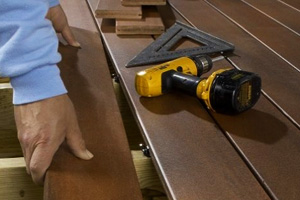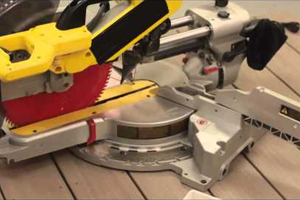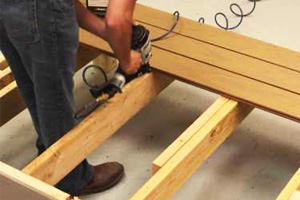
03 Aug Tools and Equipment for Your Home Deck Project
Building a deck is a very involved project. A major factor to keep in mind going into the job is what you’ll need in terms of tools and equipment. The first thing you should be certain you have is a blueprint or some sort of building design. Little things like calling out where a beam is or how far apart to space the floor joists are easy to mess up if you don’t plan carefully. Some mistakes aren’t too hard to correct, but the added time and resources are frustrating.

Building Specialist
From there you’ll be ready to get your posts set and your boards cut. You have a couple of options when it comes to setting posts. You could either dig holes yourself by hand with a shovel or, if you have access to one, or can rent one, an auger would be quite helpful here. Cutting your boards sounds simple, but there are actually multiple tools you should consider utilizing. Saw horses are beneficial for getting your materials off the ground and creating a workspace for you that doesn’t force you to be down on your hands and knees. A tape measure, chalk line, and hand saw would be sufficient for measuring, marking, and making straight cuts. At the same time, if you are making different angle cuts, a framing square and circular saw will be handy. You could also use a miter saw, or chop saw, to get the job done.
After you have all of your area prepped and your materials ready to go, it’s construction time. Securing all of the individual parts of your deck is crucial to the deck’s longevity, as well as your family’s safety. Start by fastening your posts. You should drill a hole with a concrete, or masonry, bit in order to install masonry anchors in the posts. Power drills in general are necessary tools for most building projects. We especially recommend cordless drills for ease. The reason for using a drill over a hammer is because screws hold down boards tighter than nails do – not to mention they look a little nicer. Don’t worry though, the old reliable hammer will still come into play when you’re nailing in your joist hangers. Lastly, you’ll want to have plenty of brackets in supply for holding boards, posts, railings, etc. all together.



With any project, a few other useful tools include a level, ladder, and clamps. There are often precautionary recommendations as well when operating power tools so be conscious of following those. At minimum, the basics usually are related to eye and ear protection.
Once your deck is built, the last step is to finish the lumber. Next time we will discuss the pros and cons between stains, sealant, and paint. So, keep an eye out for that!

